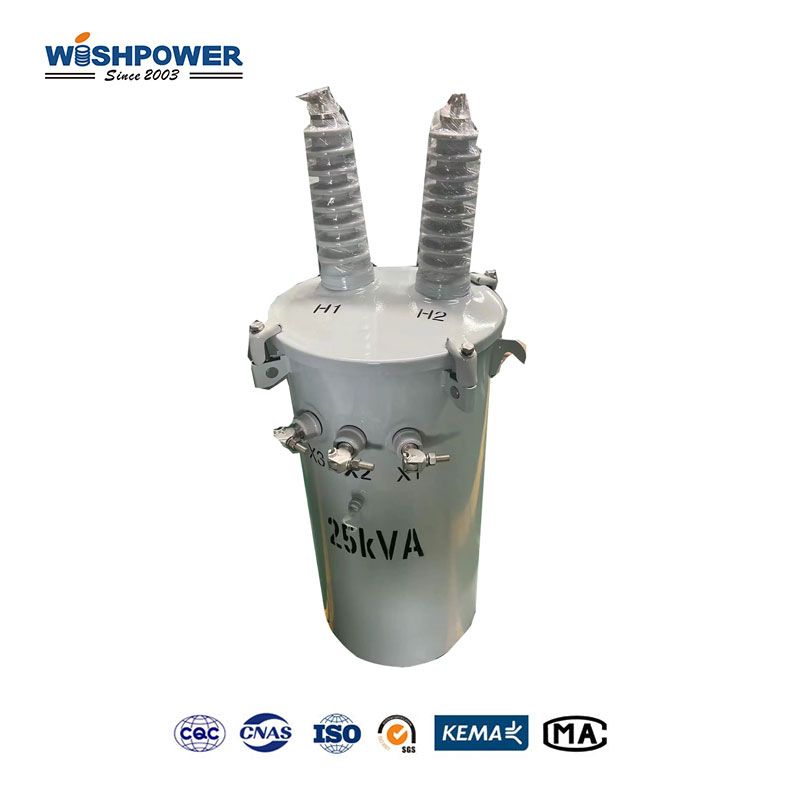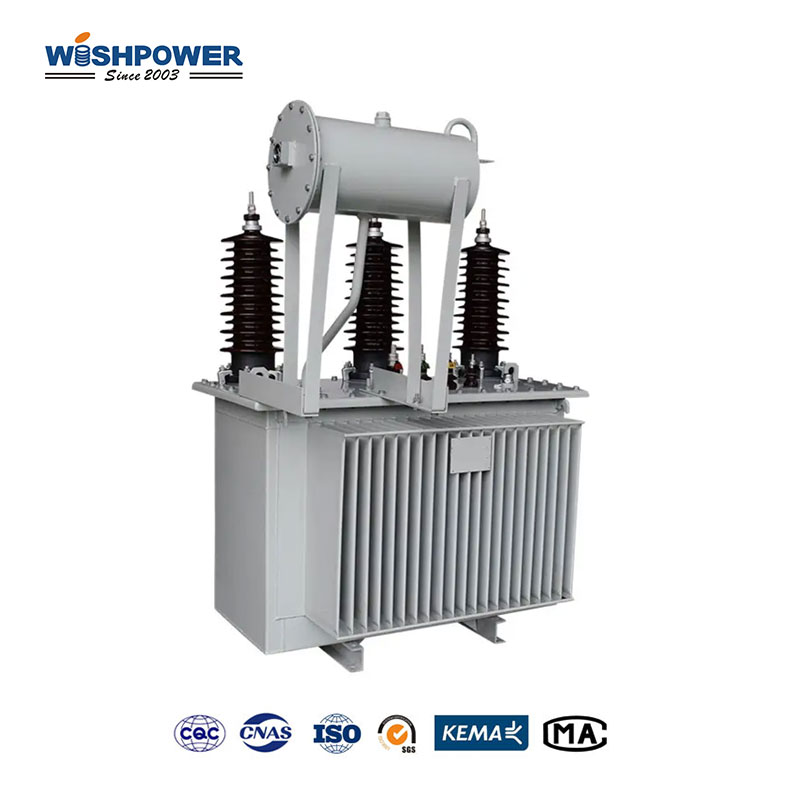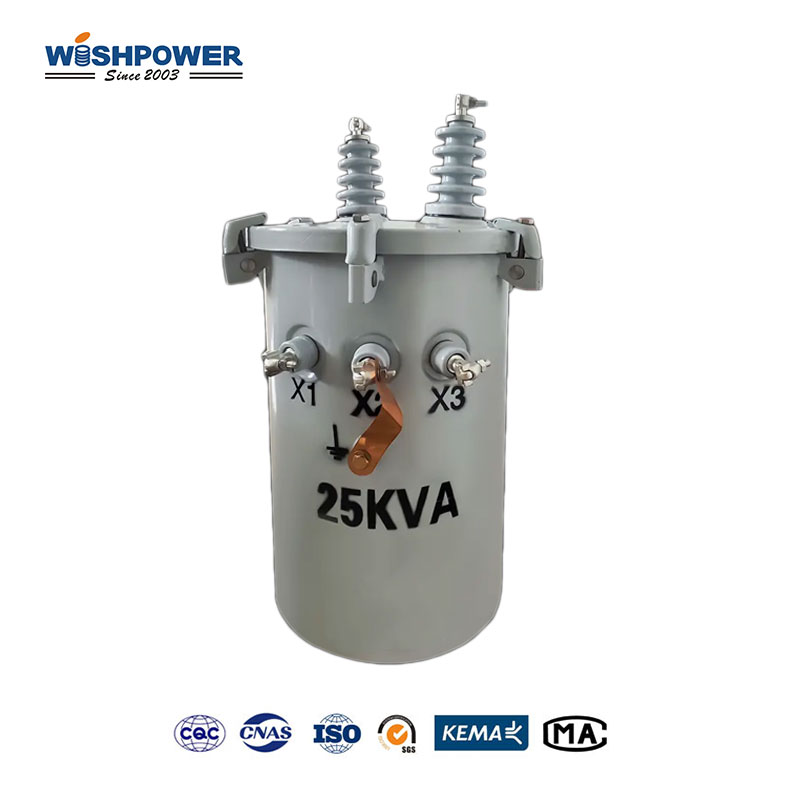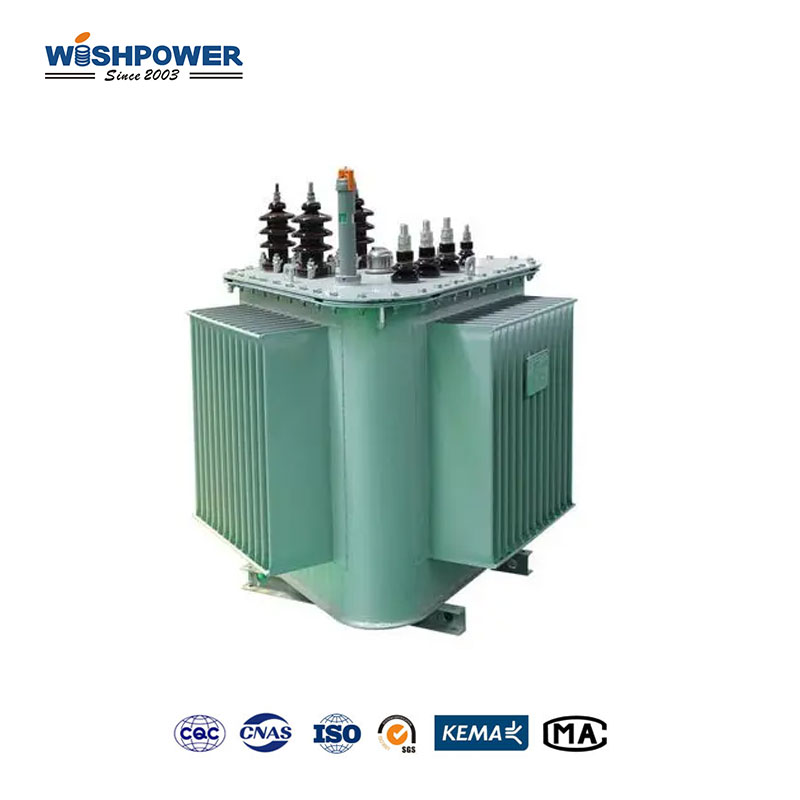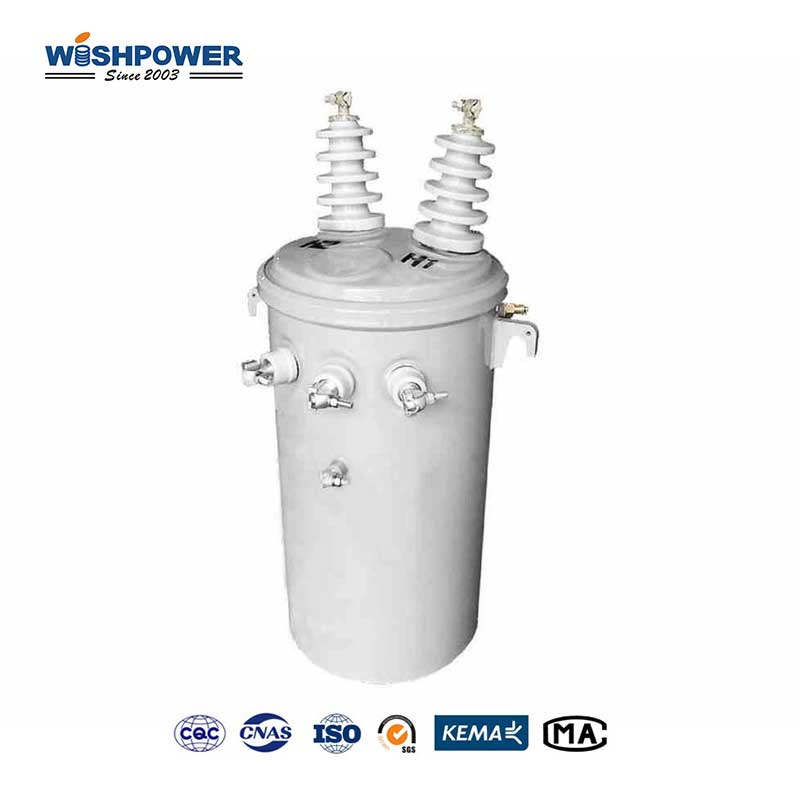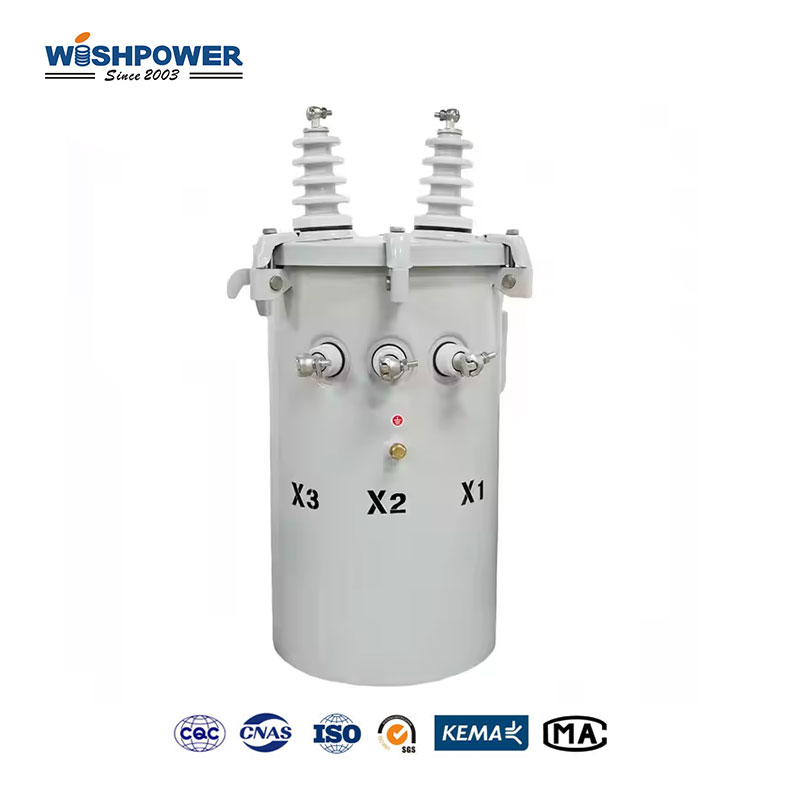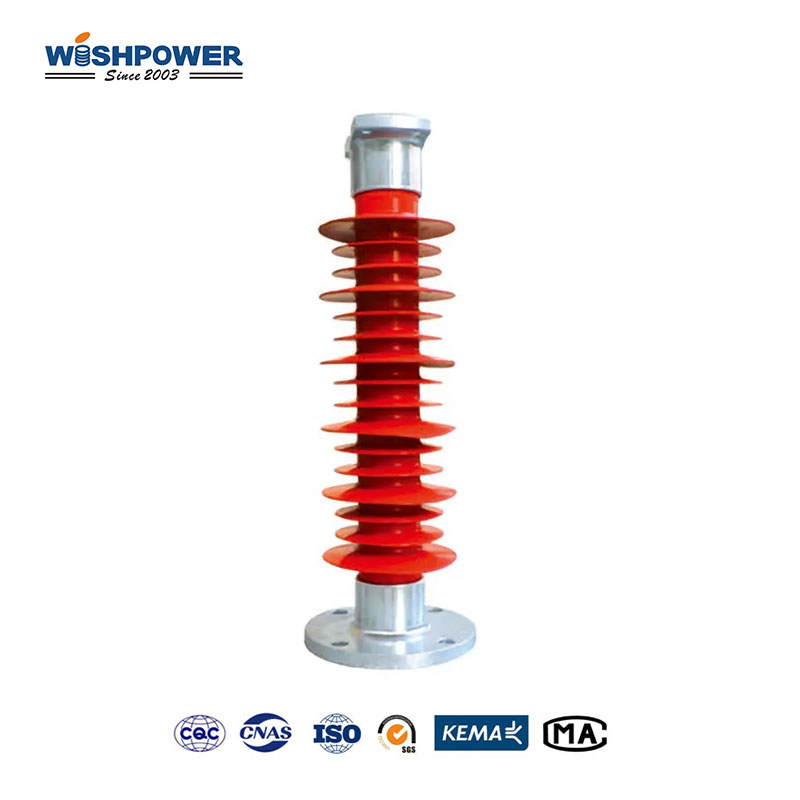Specification
| Rated Power (KVA) |
High Voltage (V) |
Low Voltage (V) |
Loss (W) |
Dimension (mm) |
Weight (kg) |
| No-load Loss (W) |
On-load Loss (W) |
W |
D |
H |
Oil Weight |
Total Weight |
| 5 |
13200 12470 7957 7620
or others |
120-240 240-480 347 600 |
19 |
75 |
465 |
485 |
855 |
15 |
92 |
| 10 |
36 |
120 |
500 |
525 |
885 |
22 |
150 |
| 15 |
50 |
195 |
520 |
565 |
905 |
30 |
210 |
| 25 |
80 |
290 |
560 |
590 |
935 |
45 |
258 |
| 37.5 |
105 |
360 |
610 |
625 |
935 |
50 |
340 |
| 50 |
135 |
500 |
635 |
675 |
1035 |
62 |
395 |
| 75 |
190 |
745 |
840 |
745 |
1035 |
86 |
495 |
| 100 |
210 |
1100 |
770 |
965 |
1135 |
94 |
585 |
| 167 |
350 |
1410 |
795 |
890 |
1335 |
138 |
680 |
If you are interested in our transformers and related transformer accessories, please get more information and professional solutions through this website or directly through info@wishpower.net
What is Pole Top Transformer?
An electrical device mounted on utility poles and used to step down high voltage from overhead power lines to a lower voltage placed for use in residences, commerce, or industry is called a pole top transformer. It is an important piece of the power transmission network because it allows electricity that is transmitted from high voltages for efficiency, but is not usable by end users, to be lowered to safe voltages, for end use. These are costly items often constructed of a tough steel or aluminum tank for outdoor use, insulated with oil or other insulating fluid to prevent overheating and to provide safe operation. The distribution systems’ demand for transformers often determines if they have single or three-phase designs. Residential areas use the single-phase kind, and the three-phase kind is used in commercial industrial locations. The mechanism has bushings and connectors to connect directly to overhead power lines or voltage cables, so it may be easily integrated into junction boxes in a given infrastructure. Due to their compact and lightweight design, they are also easier to install on poles which means they have a smaller footprint compared to those transformers that are ground mounted.
Pole Top Transformers Standards
- Technical Parameters and Requirements of Oil-Immersed Power Transformers (GB/T 6451)
This Chinese national standard, Oil Immersed Transformers meant oil immersed transformers, outlines technical requirements, testing methods, and performance parameters. It focuses on the durability and efficiency of the power distribution system.
- Power Transformers– IEC 60076
International Electrotechnical Commission, IEC 60076, defines the general requirements, tests, and performance criteria for power transformers as an international standard. It provides you with compatibility and reliability across global applications.
- Power Transformers – AS/NZS 60076
This IEC 60076 DC adapted to local conditions and regulations is a joint Australian and New Zealand standard. This makes sure that the environment and the requirement for overall performance are met according to a region.
- CSA C88-16 – Power Transformers
A standard that specifies the design, manufacturing, and testing of power transformers, as applied by the Canadian Standards Association. It allows Canadian climate and operating conditions to be met by transformers.
- ANSI/IEEE C57.12.00, General Requirements for Liquid Immersed Distribution, Power, and Regulating Transformers
ANSI and IEEE this American standard provides guidelines for the general design, testing, and safety of liquid-immersed transformers. Efficient and robust electrical power systems are a focus of attention.
- Power Transformers – CostR52719
The emphasis of this standard is on power transformer cost-effective manufacturing and performance optimization with considerations of quality and economics. It is often mentioned for large-scale projects.
Installation Precautions
- Site Inspection Preparation
Make a close examination of the installation site. See that the transformer itself is not too large to go on the utility pole that supports it. Take out any nearby vegetation, or obstacles that may catch the transformer or power lines.
- Proper Grounding
Make sure there is a good grounding system set up to avoid electric hazards. The advantage is that grounding substantially reduces the risk of electrical faults, improves system performance during lightning strikes or power surges, and also makes the system safer.
- Correct Mounting Hardware
Also use mounting brackets, bolts, and the like, that are designed for the weight of the transformer being mounted. Make sure all fasteners are secure and if possible tighten all fasteners once on the system, especially to avoid loosening from wind or vibrations.
- Secure Electrical Connections
Make sure to follow correct procedures alignment in high voltage input lines and low voltage output lines. Insulated connectors should be used and connections all be verified as secure, preventing electrical arcing or power loss.
- Clearances and Accessibility
Clearance should be maintained to the transformer and other equipment that is close to nearby structures, vegetation, etc. This guarantees proper ventilation, minimizes fire risks, and allows easy maintenance or repair access.
- Load Assessment
Check that the transformer is sized properly for the loads that you’re going to pass through it. Do not overload, because it will lead to overheating, reduce efficiency, and even result in failure.
- Oil Level and Insulation Check
Oil Immersed Transformer Part Inspection: Inspect before installation, the oil level and quality for oil immersed transformers. The insulation system needs to be intact to avoid performance or leakage.
- Weather Protection
Make sure that the transformer can withstand local weather. To handle such extremes, such as extreme temperatures, rain, or lightning, additional protective measures may be needed (including surge arresters, shields, or coatings).
- Safety Regulation Compliance
Installation should follow local electrical codes and safety regulations. Keep workers in high voltage safety procedures and ensure all workers are trained in high voltage safety procedures and wear the appropriate personal protective equipment (PPE).
- Testing Before Energization
Do a proper pre-energization test, which includes insulation resistance testing, continuity of ground checks, and voltage verification. Before connecting the transformer to the power grid, make sure it’s working.
Certificate
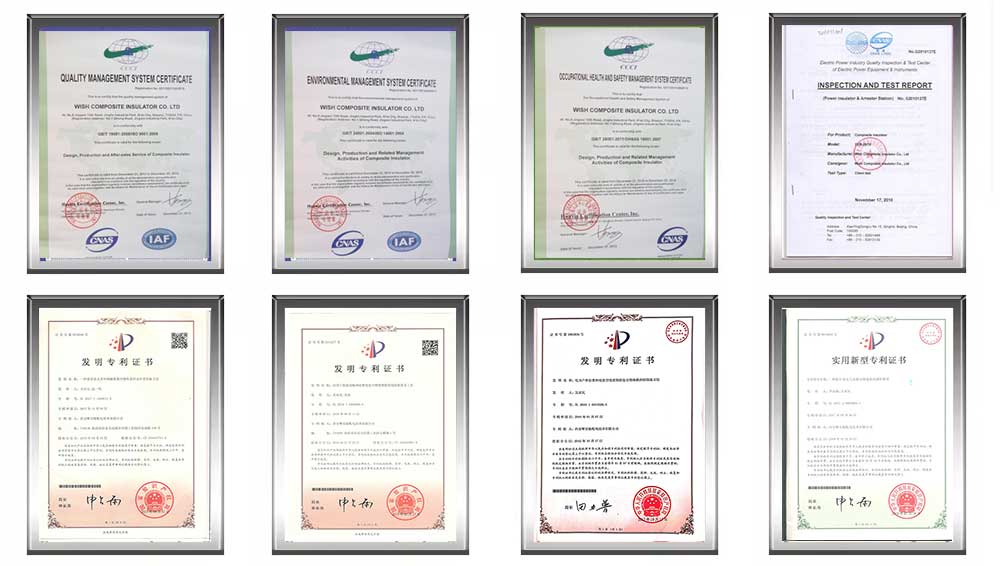
Factory
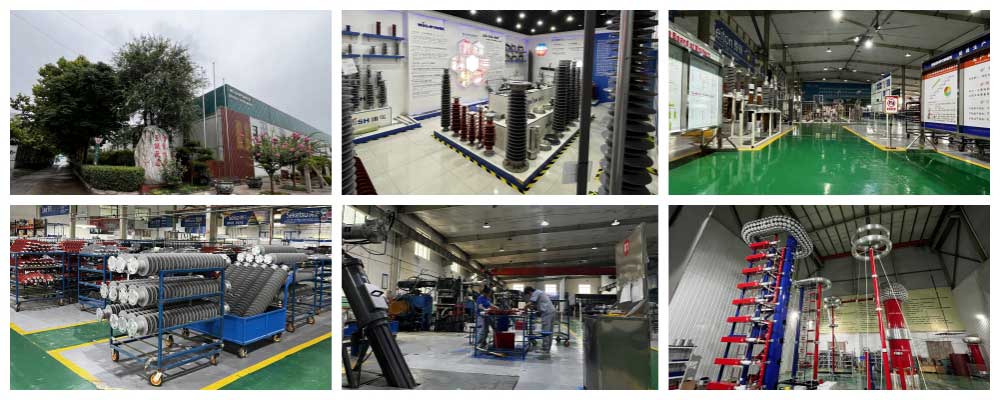
Hot Tags: Pole Top Transformer, transformer, made in Thailand available, manufacturers, ISO factory, wholesale, KEMA, high quantity, best, price, low to high voltage






